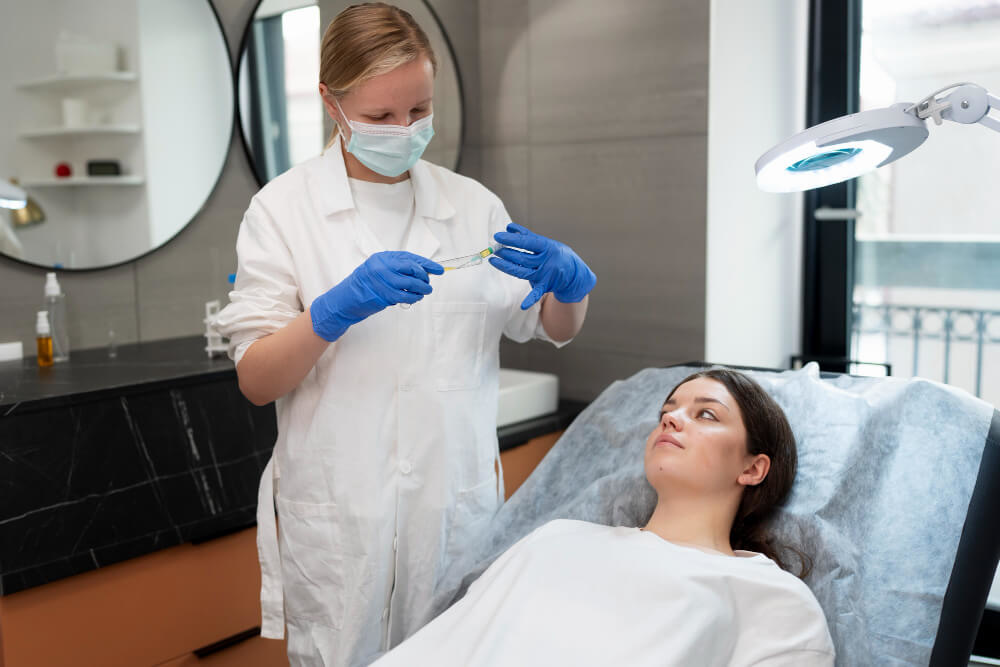The Future of Healing: An In-Depth Guide to Regenerative Care Training
Our bodies possess a remarkable, innate capacity to heal. A simple cut on a finger scabs over and eventually disappears, and a broken bone knits itself back together. For centuries, medicine has worked to support these natural processes. But what if we could go further? What if we could actively guide and enhance the body’s own healing mechanisms to repair damage, combat disease, and restore function on a cellular level? This is the revolutionary promise of regenerative care, a field that is fundamentally changing our approach to health and wellness.
This emerging branch of medicine moves beyond simply managing symptoms. Instead, it aims to address the root causes of injury and illness by harnessing the power of the body’s own regenerative potential. It represents a paradigm shift from reactive treatment to proactive restoration. As this powerful field expands, the need for comprehensive and rigorous regenerative care training has become more critical than ever, ensuring that practitioners can safely and effectively deliver these life-changing therapies.
Understanding this new frontier is important not just for doctors and scientists but for everyone. It signifies a future where we may be able to heal tissues once thought to be permanently damaged and manage chronic conditions in entirely new ways. This guide will explore the core concepts of regenerative care, explain why specialized education is non-negotiable for practitioners, and look ahead at the incredible potential it holds for human longevity and healthspan.

What Exactly is Regenerative Care?
At its heart, regenerative care is a branch of medicine focused on a simple yet profound goal: to repair, replace, or regenerate human cells, tissues, and organs to restore normal function. Think of a traditional approach to a worn-out knee joint as managing the pain with medication or eventually replacing the joint with an artificial one. Regenerative care, in contrast, would seek to help the body rebuild the damaged cartilage and reduce the inflammation that caused the problem in the first place.
It works by leveraging the body’s own powerful biological tools. These include stem cells, which are unique cells that can develop into many different cell types, and growth factors, which are proteins that signal cells to grow, divide, and repair. Therapies often involve concentrating these healing elements from a patient’s own body and reintroducing them to an area of injury or degeneration to supercharge the natural recovery process.
Imagine a gardener tending to a struggling plant. Instead of just trimming the brown leaves, a master gardener would enrich the soil, provide the right nutrients, and ensure the plant has everything it needs to heal itself and grow stronger from its roots. Regenerative care works on a similar principle, providing the body with the concentrated resources it needs to execute a more robust and complete healing response.
This field encompasses a variety of techniques and therapies. Some of the most well-known include Platelet-Rich Plasma (PRP), where a patient’s own platelets are concentrated to promote healing in soft tissues, and cell-based therapies that use a patient’s own cells to repair damaged areas. The common thread is the focus on stimulating the body’s inherent power to mend itself from within.

How Does Regenerative Care Differ from Traditional Medicine?
The fundamental difference lies in the objective. Traditional medicine has excelled at treating acute illnesses, managing chronic symptoms, and performing life-saving surgeries. If you have a bacterial infection, an antibiotic is a perfect solution. If you have chronic arthritis pain, pain relievers and anti-inflammatory drugs can provide significant relief and improve quality of life. These interventions are incredibly valuable, but they often focus on managing the consequences of a disease rather than reversing the underlying cause.
Regenerative care takes a different path. It asks, ‘Why is this tissue damaged, and how can we help the body fix it?’. Instead of providing a crutch, it aims to rebuild the weakened structure. This represents a shift from a disease-centric model to a patient-centric, healing-oriented model. The goal is not just to make the patient feel better temporarily but to restore function and resilience for the long term.
Consider the treatment of a chronic tendon injury. A traditional approach might involve rest, physical therapy, and steroid injections to reduce inflammation. While helpful, this may not fully address the poor-quality, weakened tissue. A regenerative approach, however, might use a therapy like PRP to deliver a high concentration of growth factors directly to the tendon, stimulating the formation of new, healthy collagen and leading to a more durable repair.
This doesn’t mean regenerative care replaces traditional medicine. Rather, it is a powerful complement to it. The best medical outcomes often come from an integrative approach where both disciplines are used strategically. A surgeon might repair a torn ligament, and a regenerative specialist might then use therapies to enhance the healing of that surgical repair, leading to a faster and stronger recovery.

Why is Specialized Training So Crucial?
As the potential of regenerative care becomes more apparent, the demand for these treatments is surging. However, the complexity and novelty of these therapies mean that specialized training is not just beneficial; it is an absolute necessity for any practitioner entering the field. The ‘weekend course’ approach is insufficient and poses risks to patient safety and treatment efficacy.
First and foremost, patient safety is paramount. These are not simple injections. They involve handling biological materials, understanding sterile techniques, and having a deep knowledge of human anatomy and physiology. Improperly administered treatments can lead to infection, tissue damage, or simply a lack of results, which erodes patient trust. A well-trained practitioner knows not only how to perform a procedure but also how to manage potential complications.
Furthermore, the science of regenerative medicine is incredibly nuanced. The success of a treatment depends on a multitude of factors: the specific condition being treated, the patient’s overall health, the exact preparation of the biological material, and the precise technique of delivery. A one-size-fits-all approach is doomed to fail. Proper training equips physicians with the critical thinking skills to tailor treatments to each individual, a cornerstone of personalized medicine.
For medical professionals looking to integrate these services, obtaining the right credentials is key to establishing expertise and trust. A formal regenerative medicine certification for physicians demonstrates a commitment to the highest standards of care. It signifies that the practitioner has undergone a rigorous educational process covering the science, clinical applications, and ethical considerations of the field.
The field is also evolving at a breathtaking pace. New research is published almost daily, refining our understanding of how these therapies work and expanding their potential applications. A commitment to ongoing education is essential to stay current. The training received five years ago may already be outdated. High-quality training programs emphasize lifelong learning, ensuring that practitioners remain at the cutting edge of regenerative science.

What Topics are Covered in Regenerative Care Training Programs?
Comprehensive regenerative care training goes far beyond simply learning how to administer an injection. A robust curriculum is designed to build a deep, foundational understanding that allows a practitioner to make informed clinical decisions. It is a multidisciplinary education that blends science, clinical skill, and patient management.

Do They Cover the Basic Science?
Yes, and this is the most critical component. Before a practitioner can hope to influence the body’s healing processes, they must understand them intimately. A quality training program dedicates significant time to the fundamentals of cell biology, including the different types of stem cells and their roles in the body. It covers cell signaling pathways, which is the language cells use to communicate with each other to coordinate a healing response.
Students learn the intricate cascade of events involved in tissue repair, from the initial inflammatory phase to the final remodeling phase. They explore the specific growth factors involved in building new blood vessels, creating new collagen, and reducing inflammation. This scientific foundation is what separates a technician from a true medical expert, enabling them to understand the ‘why’ behind every ‘how’.

What About Specific Therapies?
Of course, training must translate science into practice. Programs provide detailed, evidence-based instruction on the most common regenerative therapies. This includes the theory, preparation, and application of treatments like Platelet-Rich Plasma (PRP) and prolotherapy, a technique that stimulates healing in joints and ligaments. Students learn the different systems for preparing PRP and how variations in concentration can affect outcomes.
Crucially, this includes extensive hands-on training. Under expert supervision, practitioners learn the precise techniques for harvesting and preparing biologics. They practice injection techniques, often using ultrasound guidance to ensure the therapy is delivered exactly where it is needed most. This practical skill development is essential for achieving consistent and positive patient results. The convenience of modern education also means that much of the didactic learning can be completed through flexible formats like online CME courses in regenerative medicine, which allows busy professionals to learn at their own pace before attending hands-on workshops.

Is Patient Selection and Safety Included?
Absolutely. A key part of any medical training is learning not just who to treat, but who not to treat. Regenerative care training places a heavy emphasis on patient selection and managing expectations. Practitioners learn how to conduct thorough patient evaluations to determine who is an ideal candidate for a specific therapy. This involves reviewing medical history, performing physical exams, and interpreting diagnostic imaging.
They also learn about contraindications, which are conditions or factors that would make a procedure unsafe or unlikely to succeed. Furthermore, a huge part of success is ethical and transparent communication. Training teaches practitioners how to explain the potential benefits and limitations of a therapy, ensuring patients have realistic expectations about their potential outcomes. This focus on the entire patient journey, from initial consultation to post-procedure follow-up, is a hallmark of a high-quality educational program.

Who Can Benefit from Regenerative Care?
The applications for regenerative care are vast and continue to grow as research progresses. Because it works by stimulating the body’s own repair mechanisms, it has potential relevance for a wide range of conditions across various medical specialties. It is a highly personalized field, where treatment is tailored to the individual’s specific needs and biology.
One of the most established areas is in orthopedics and sports medicine. Athletes and active individuals suffering from chronic tendon injuries, ligament sprains, or early-stage arthritis are often excellent candidates. Conditions like tennis elbow, Achilles tendinopathy, and rotator cuff tears, which can be slow to heal with traditional methods, often respond well to therapies that stimulate tissue regeneration and reduce chronic inflammation.
Another rapidly growing area is aesthetics and dermatology. Regenerative techniques are being used to improve skin quality, texture, and tone by stimulating collagen production. This can help reduce the appearance of fine lines, wrinkles, and acne scars. It is also a promising approach for hair restoration, where growth factors can be used to stimulate dormant hair follicles and improve hair density and thickness.
Beyond these areas, researchers are exploring the potential of regenerative medicine to help manage a variety of chronic conditions. The focus is often on modulating the immune system and reducing the systemic inflammation that drives many age-related diseases. The ultimate goal is to move beyond managing symptoms and instead address the underlying cellular dysfunction, improving the body’s overall health and resilience.

How is Genetics Related to Regenerative Care?
The intersection of genetics and regenerative medicine is one of the most exciting frontiers in healthcare. Our genetic code is the fundamental blueprint for how our bodies are built, how they function, and, importantly, how they heal. Understanding an individual’s unique genetic makeup can provide invaluable insights that help personalize regenerative therapies for maximum effectiveness.
For example, some people have genetic variations that may make them more prone to inflammation or slower to heal. Knowing this information ahead of time can help a practitioner set realistic expectations and potentially adjust a treatment protocol to better support that individual’s biology. The field of genetic testing provides a window into these predispositions, moving us closer to truly personalized medicine.
Specialized companies in this space, such as Myriad, have pioneered tests that can identify genetic markers for various health conditions. While often used for cancer risk assessment, the technology and principles are being applied more broadly to understand an individual’s overall health profile. This data can empower both patients and doctors to make more informed decisions about preventative care and treatment strategies.
The scientific community, represented by organizations like the American Society of Human Genetics, is constantly working to advance our understanding of the human genome and its role in health and disease. As this knowledge grows, it will become increasingly integrated into regenerative care protocols.
With the rise of at-home testing kits, it’s also important for consumers to be well-informed. While these can be empowering, it’s crucial to understand their limitations and how to interpret the results. Resources from consumer protection agencies, like the FTC’s guide on direct-to-consumer genetic tests, can help people navigate this emerging market safely and effectively. In a clinical setting, genetic information becomes another powerful tool in the practitioner’s arsenal to optimize regenerative outcomes.

What is the Future of Regenerative Medicine and Longevity?
The future of regenerative care is inextricably linked with the pursuit of longevity and increased ‘healthspan’—the number of years we live in good health. The goal is not simply to extend life, but to enhance the quality of those extended years. Regenerative medicine is a cornerstone of this vision, offering the potential to repair age-related cellular damage and maintain youthful function for longer.
As the field matures, we can expect to see even more sophisticated therapies emerge. Scientists are working on advanced techniques like tissue engineering, where they can grow new tissues and even simple organs in a lab for transplantation. The concept of 3D-printing replacement cartilage or skin using a patient’s own cells is moving from science fiction to scientific reality.
This evolution is also changing the role of the healthcare provider. Practitioners in this space are becoming more like long-term health strategists, guiding their patients through a proactive wellness journey rather than just treating sickness as it arises. This forward-thinking approach is giving rise to new and innovative practice structures. Clinicians are now exploring different business models for a private longevity clinic that are built around comprehensive, preventative, and restorative care.
Ultimately, regenerative care is about shifting the entire paradigm of medicine. It is about harnessing the incredible, resilient power of the human body and working with it to create a future where we not only live longer, but thrive with vitality and function well into our later years. It is a journey of discovery that is just beginning.
Frequently Asked Questions

How much hands-on practice is typically included in a training course, and is it enough to be proficient?
High-quality training programs emphasize significant hands-on scanning time, often using live models or advanced phantoms to simulate real patient scenarios. You can expect a substantial portion of the course, frequently 50% or more, to be dedicated to this practical application under expert supervision. The primary goal is to build foundational skills in probe handling, image optimization, and needle visualization.
While a course provides a critical foundation, true proficiency is developed through continued practice after the training concludes. Most clinicians are not fully independent immediately but are equipped with the safety principles and core techniques to begin performing procedures. Consistent application in your own clinical setting, ideally with mentorship, is essential to translate course knowledge into expert-level skill.

Do I need to be a specific type of medical specialist to get trained in ultrasound-guided injections?
Training for ultrasound-guided injections is not limited to a single specialty and is valuable for a wide range of medical professionals. Clinicians in fields such as sports medicine, anesthesiology, rheumatology, pain management, and even primary care can greatly benefit from this skill. The most important prerequisite is having a medical license that permits you to perform injection procedures within your scope of practice.
The key is to choose a training program that aligns with your specific clinical needs and patient population. For instance, a physiatrist might focus on peripheral joint and nerve injections, while a pain specialist may require training for more advanced truncal blocks. Ensure the course curriculum is directly relevant to the procedures you intend to perform in your daily practice.

What are the best ways to maintain and improve my skills after completing an initial training program?
Maintaining your ultrasound skills requires consistent and deliberate practice by integrating the technique into your clinical workflow as soon as possible. A great strategy is to start by scanning patients for diagnostic purposes to continuously improve your anatomical recognition and probe handling. Seeking mentorship from an experienced colleague who can provide feedback on your technique and case selection is also invaluable.
Additionally, consider attending advanced or refresher workshops to learn new techniques and stay updated on the latest evidence. Joining professional societies related to musculoskeletal ultrasound can provide access to valuable resources, online forums, and a network of peers. Regularly reviewing your own saved images and videos is another excellent way to self-assess and identify areas for improvement over time.
Discover the most comprehensive functional medicine training, longevity training, and biohacking certification programs designed specifically for healthcare professionals, medics, and clinic owners who want to master regenerative medicine protocols and anti-aging therapies.







